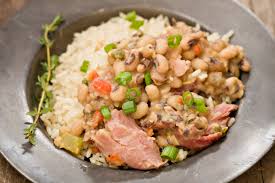Unveiling the Origins of Hoppin' John: A Culinary Journey Through History
Hoppin' John, a beloved dish in Southern cuisine, has a rich and storied history that reflects the diverse culinary traditions of the American South. In this article, we delve into the origins, evolution, and cultural significance of Hoppin' John, tracing its culinary journey from its roots in African and Caribbean cuisines to its status as a cherished comfort food in the United States.
1. African Roots: The Origins of Hoppin' John
Hoppin' John traces its origins back to West African cuisine, where similar dishes featuring rice and beans were commonly prepared. Enslaved Africans brought their culinary traditions to the Americas, where they adapted and transformed these dishes using local ingredients and cooking techniques.
2. Caribbean Influence: Creole Flavors and Techniques
In addition to its African roots, Hoppin' John was influenced by Caribbean culinary traditions, particularly in regions with significant Afro-Caribbean populations. Ingredients such as black-eyed peas, rice, and spices were readily available in the Caribbean, where they were incorporated into traditional Creole dishes and later introduced to the American South.

hoppin john history
3. American Adaptation: Hoppin' John in the South
Hoppin' John became a staple of Southern cuisine, particularly in states like South Carolina and Georgia, where rice cultivation and African culinary influences were prevalent. The dish typically consists of black-eyed peas cooked with rice, onions, and seasonings, often served with a side of greens and cornbread.
4. Cultural Significance: New Year's Tradition and Symbolism
Hoppin' John holds special significance as a New Year's Day tradition in the American South, where it is believed to bring good luck and prosperity for the coming year. The black-eyed peas represent coins or wealth, while the greens symbolize money and the cornbread represents gold.

hoppin john history
5. Modern Interpretations: Variations and Adaptations
In modern times, Hoppin' John has evolved to include various interpretations and adaptations, with chefs and home cooks adding their own twists and flavors to the classic dish. Vegetarian and vegan versions are popular, as are variations featuring different types of beans, grains, and seasonings.
In conclusion, the history of Hoppin' John is a testament to the rich culinary heritage of the American South, blending African, Caribbean, and American influences into a comforting and flavorful dish that continues to be enjoyed by generations of Southerners and food enthusiasts around the world.